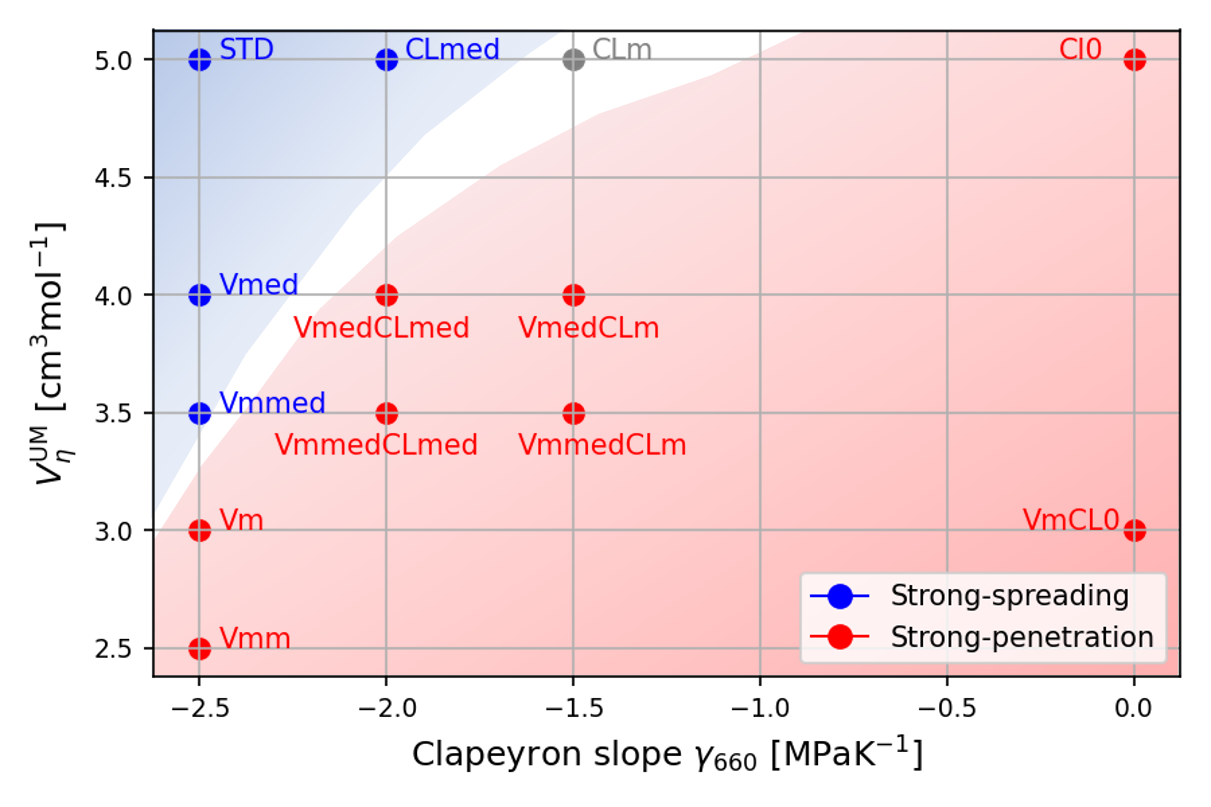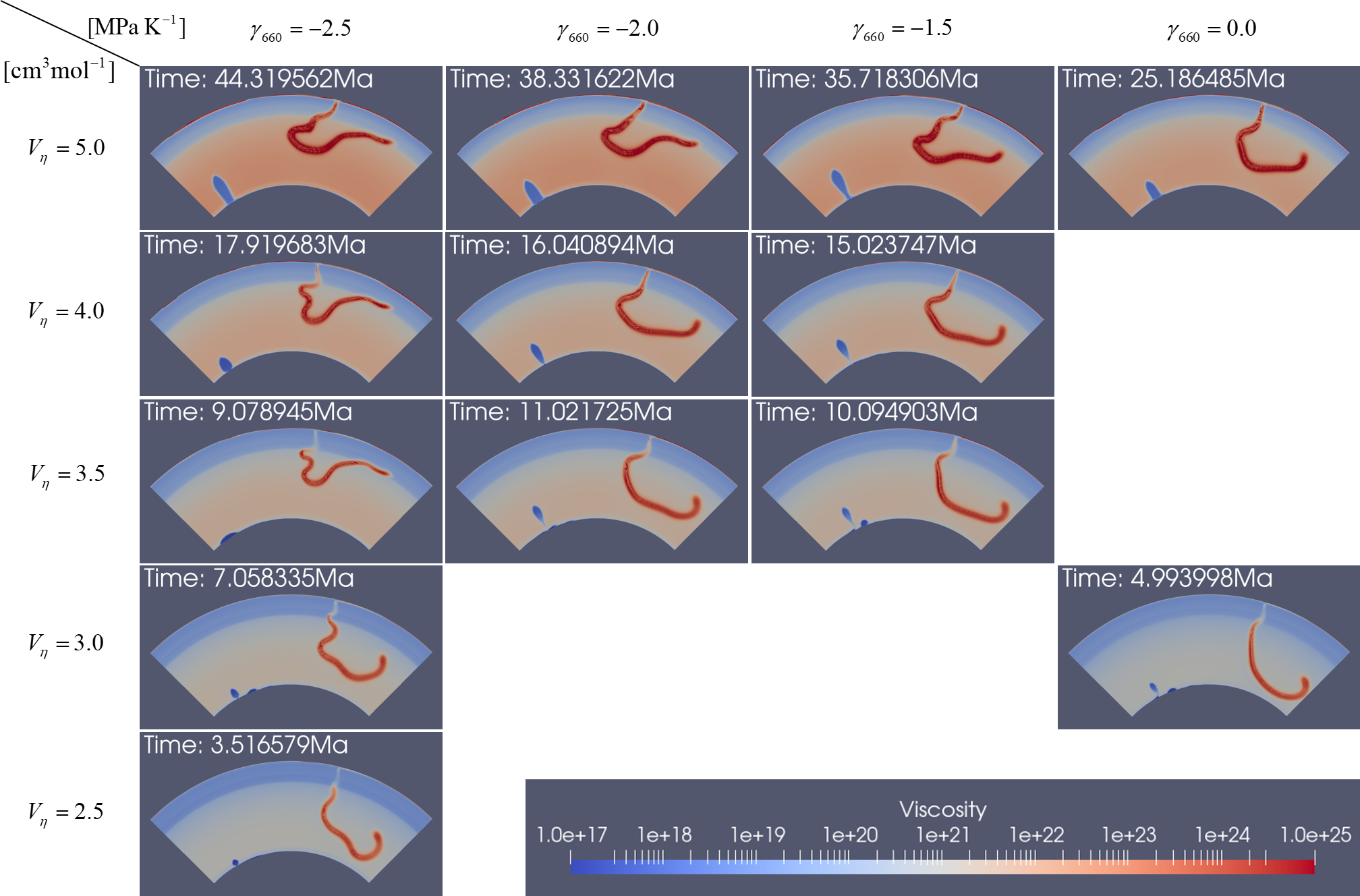Slab morphology under varying mantle-plate properties
Semester project (2021)
Subduction dynamics and consequent slab morphology depends on both mantle properties, phase transition constitutive parameters, and plate properties. Certain morphology of the subducted slab may be relevant to compositional segregation and recycling of the material. We use chemico-thermo-mechanical models to simulate free subduction of a surface plate initiated by temperature-induced negative buoyancy. Influence of different parameters on the morphology of the slab has been investigated, including 660 viscosity jump, upper-mantle activation volume, Clapeyron slope, initial age and plate yield strength. Two subduction regimes, (i) the strong-spreading regime, characterized by lateral spreading of subducted plate above 660km, before finally penetrating into the lower mantle, and (ii) the strong-penetration regime, characterized by slab’s penetration of the 660 phase transition depth during lateral extension, have been identified. Each subduction regime results in different morphology of the slab as it sinks into the lower mantle. We show that upper-mantle activation volume and 660 Clapeyron slope play an important role in determining the specific dynamic regimes, while viscosity jump, initial plate age and yield strength seem to be irrelevant, at least within the range considered in this study. Similar compositional segregation and later dynamics near CMB develop for both regimes and slab morphology, and there is no simple clear-cut parameter difference which can be observed in this study that distinguishes stable basalt preservation near the CMB from the unstable cases.
This project was finished in 2021 as a semester project under the supervision of Prof. Paul Tackley.

